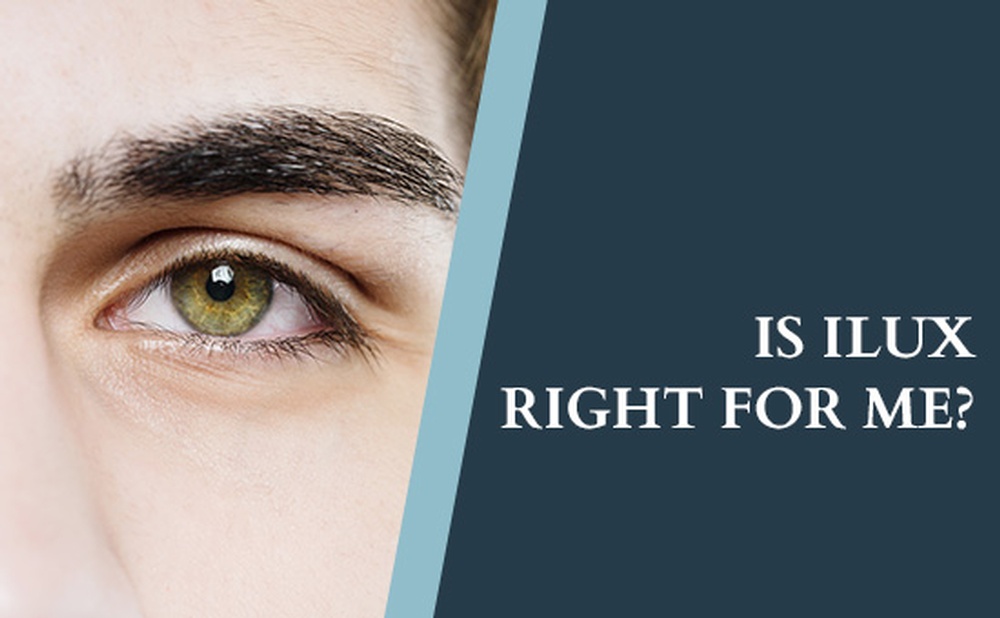Dry eye is a chronic disease caused by deficiencies in the quantity and quality of meibum within the tear film. It is known to affect over six million people in Canada, and as a result, many sufferers struggling with symptoms such as dryness and irritation in their eyes, try to treat the problem themselves with artificial tears. However, despite using these topical drops, they may continue to experience dry eye symptoms.
About 86% of dry eye sufferers are reported to have clinical signs of meibomian gland dysfunction. That means to treat this problem effectively and reduce irritation in the eyes, you’ll need more than eyedrops. Currently, one of the best and safest treatments for dry eye is iLux. It is a targeted treatment device that is used to warm and compress the glands in the eyelids of adult patients with a specific type of dry eye called Meibomian Gland Dysfunction or evaporative dry eye.
What is Meibomian Gland Dysfunction?
Meibomian Gland Dysfunction (MGD) is a condition where the glands that help keep our tear film oily get blocked, thus causing tears to evaporate easily and dry the eyes out. MGD is a chronic condition and will worsen over time if not treated. The iLux MGD treatment system administers therapeutic heat and then expresses the oil directly from the blocked meibomian glands. Once the glands are unblocked, it is easier for the oil to be released naturally.
In fact, the iLux device was shown to significantly reduce dry eye symptoms such as gritty eyes and irritation. Some patient’s meibomian gland scores were reportedly three times better two weeks post-treatment and four times better after four weeks, compared to the baseline. Moreover, when this solution is chosen, patients receive personalized treatment. That means we respond to their feedback in real-time.
Usually, most patients have an exceptional experience with the iLux device. But sometimes there is a possibility of side effects like eyelid or eye pain. If this occurs when using iLux, the procedure must be halted immediately. Other side-effects include eyelid and eye irritation or inflammation, temporary reddening of the skin, and other eye symptoms like burning, stinging, tearing, itching, discharge, redness, feeling like there is something in the eye, changes in your vision, and sensitivity to light. In case you experience any of these symptoms, you’ll need to stop the process and consult your doctor immediately.
When should you opt for the iLux treatment?
If your optometrist suggests that you need to use this or a similar procedure like Lipiflow to stimulate the glands in your eyelids to obtain relief, ask them about the success of this treatment for the average patient. Check if they will perform a test before prescribing it and ask them how the procedure will be conducted and what signs you should look out for after your first session.
What should you do post-treatment?
After your iLux treatment, remember to be gentle when touching your eyes. You’ll also need to maintain the at-home treatment as prescribed by your doctor and attend all of your scheduled follow-up appointments to achieve the best results.
At Doctors EyeCare Grande Prairie, Dr. Shonah Finlay provides the best possible comprehensive eye care for all patients young, old, and in between. She has several years of experience as an optometrist in Grande Prairie, Alberta. Dr. Shonah has made it a priority to keep latest advancements in eye care so that she is able to provide patients with the solutions they require to overcome issues with their vision and eye discomfort. The iLux procedure that she offers is currently available at just $500.00. Make sure to reach out to us by giving us a call at (780) 830-5330 to schedule a dry eye assessment to determine your suitability. You can even click here to get in touch with us. If you’d like some help with another eye problem, visit our website here to know more about how we can help you.




